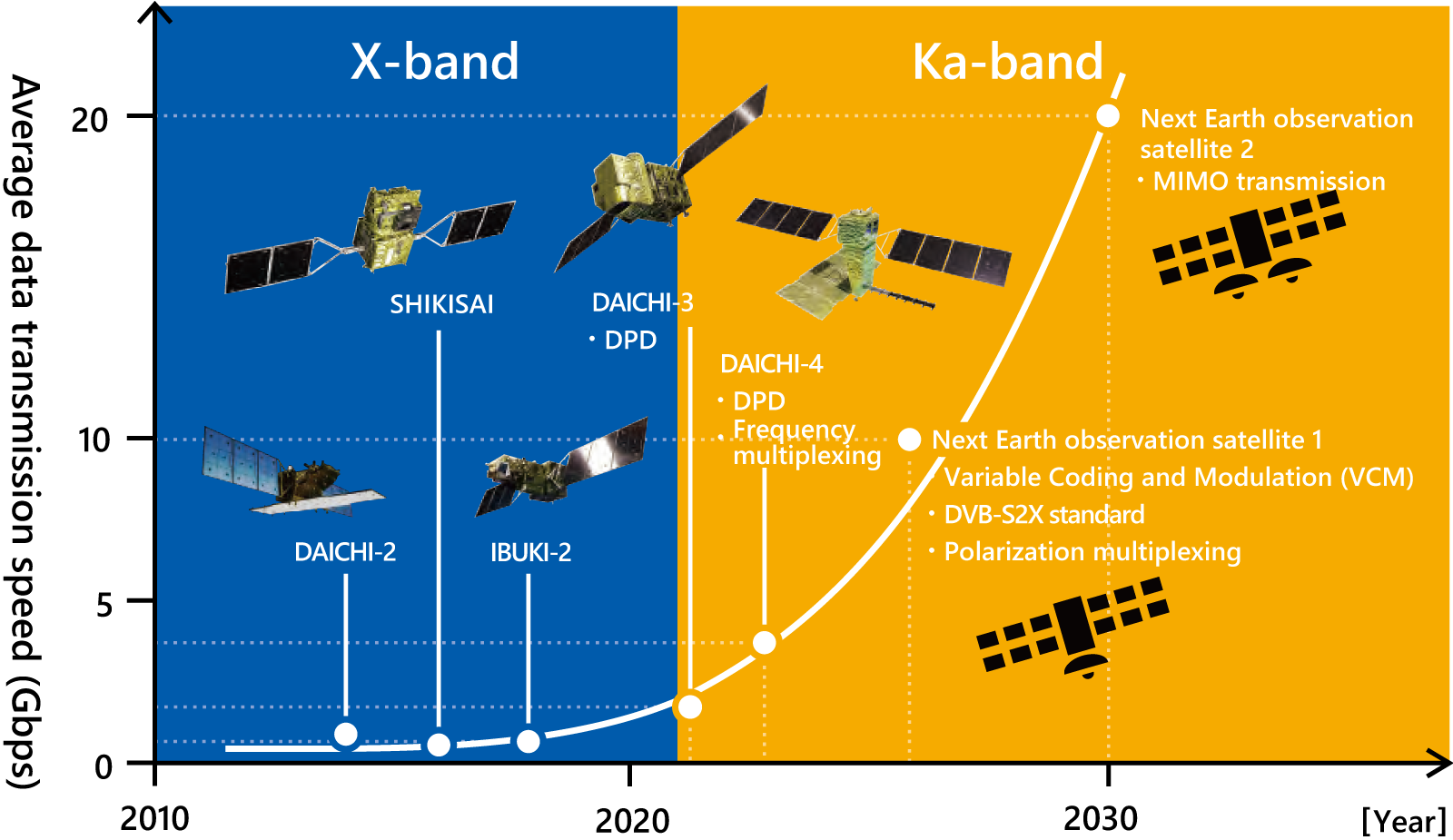Research and Development Directorate
Transmitting mission data at high speed
Evolving Satellite Communication Technology
The Research and Development Directorate is proceeding with research on satellite communication technologies to respond to the necessity of high-speed mission data transmission of Earth observation satellites. One of such technologies is the "Ka-band" communication technology. As the Ka-band frequency allocation to Earth exploration satellite service in the ITU radio regulations is wider than that of the X-band, which has been used thus far, it is possible to transmit large volumes of observation data from a satellite at high speed. Mr. NAKADAI Mitsuhiro, who serves as leading researcher, mentioned the technology's feature as follows:
"Since radio waves of the Ka-band are attenuated severely by rain, it is necessary to amplify them to a large extent using a high power amplifier and transmit. As the electric power consumption that can be used by the amplifier is limited, we decide its setting so that it will operate effectively. However, if nothing is done, output signals will be distorted due to the amplifier nonlinearity, and it is impossible to maintain the communication quality. Therefore, we employed the Digital Pre-Distortion (DPD) technology that introduces inverse distortion into input signals of the amplifier in advance to suppress the distortion of output signals. This allowed us to strike a balance between high-speed data transmission and communication quality."
This technology, which took several years for verification, is employed in the Advanced Land Observing Satellite No.3 and No.4 ("Daichi-3" and "Daichi-4"). Aiming at higher-speed communication in the next Earth observation satellite, the Research and Development Directorate is currently advancing R&D in cooperation with private companies. They are planning to demonstrate the variable coding and modulation (VCM) technology that enables flexible communication using the Innovative Satellite Technology Demonstration-2 and the MIMO (Multiple-Input and Multiple-Output) technology that spatially multiplexes more than one signals using the Innovative Satellite Technology Demonstration-3. We need to focus on the future development of satellite communication technologies.

Profile

|
|
|---|
All the images are copyrighted ©JAXA unless otherwise noticed.
- Home>
- Global Activity>
- Public Relations>
- JAXA’s>
- JAXA's No.81>
- Transmitting mission data at high speed Evolving Satellite Communication Technology